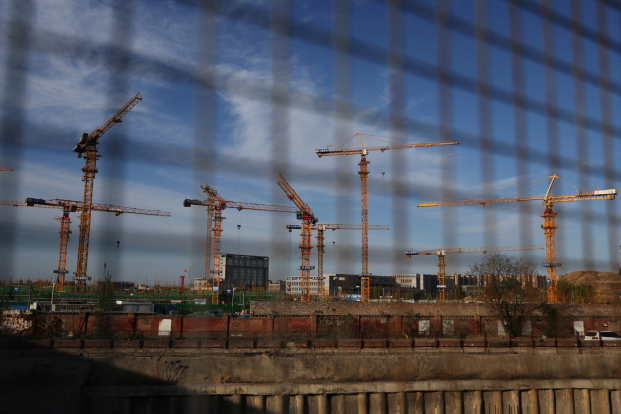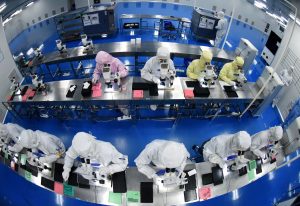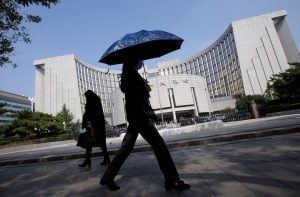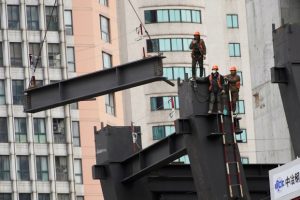China’s economy slowed in March as consumption, real estate and exports were hit hard, taking the shine off faster-than-expected first-quarter growth numbers and worsening an outlook already weakened by Covid-19 curbs and the Ukraine war.
The biggest near-term challenge for Beijing is the tough new coronavirus rules at a time of heightened geopolitical risks, which have intensified supply and commodity cost pressures, boosting global inflation and forcing Chinese authorities to walk a tightrope as they try to stimulate growth without endangering price stability.
Gross domestic product (GDP) expanded by 4.8% in the first quarter from a year earlier, data from the National Bureau of Statistics showed on Monday, beating analysts’ expectations for a 4.4% gain and picking up from 4.0% in the fourth quarter.\
Also on AF: China Can’t Take Place of SWIFT System, Analysts Say
A surprisingly strong start in the first two months of the year improved the headline figures, with GDP up 1.3% in January-March in quarter-on-quarter terms, compared with expectations for a 0.6% rise and a revised 1.5% gain in the previous quarter.
Analysts say April data will likely be worse, with lockdowns in commercial centre Shanghai and elsewhere dragging on, prompting some to warn of rising recession risks.
“The prolonged lockdown in Shanghai plus highway controls in a number of provinces have been severely disrupting logistics in China,” Tommy Wu, lead China economist at Oxford Economics, said. “The central government is now trying to balance minimising disruption against controlling the latest wave of Covid infections, but the disruption is likely to last for weeks and will weigh on activity in April and into May, if not longer.”
Iris Pang, Greater China chief economist at ING, also said: “Further impacts from lockdowns are imminent, not only because there has been a delay in the delivery of daily necessities, but also because they add uncertainty to services and factory operations that have already impacted the labour market.”
“Support from fiscal and monetary policy has not been enough to fully offset the damage to GDP created by the lockdowns. We may need to revise our GDP forecasts further if fiscal support does not come in time.”
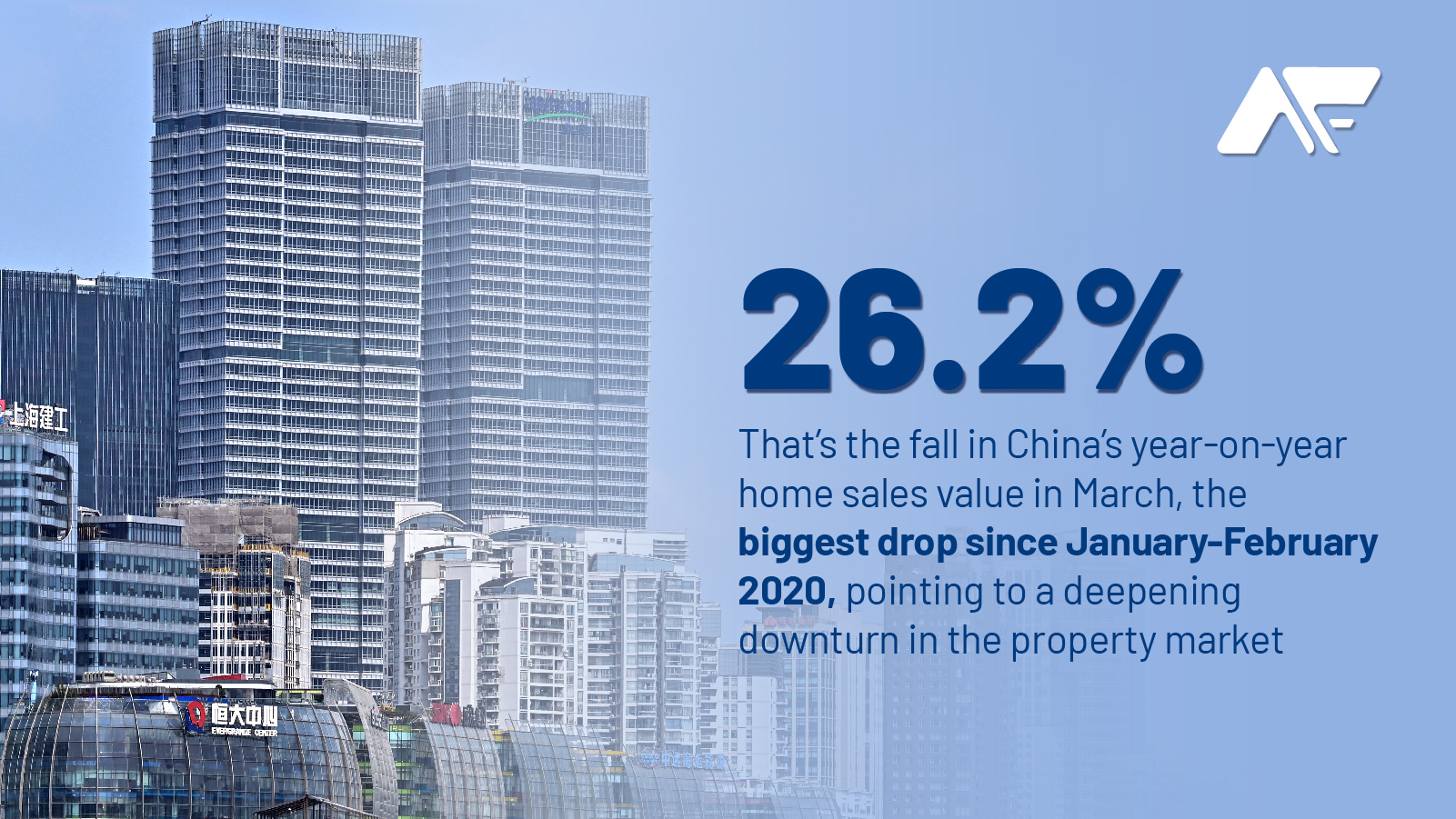
Worsening Retail Sales, Jobless Rate
Data on March activity showed retail sales contracting the most on an annual basis since April 2020 on widespread Covid curbs across the country. They fell 3.5%, worse than expectations for a 1.6% decrease and an increase of 6.7% in January-February.
The job market is already showing signs of stress in March, a usually robust month for labour market as factories resume hiring after the Lunar New Year holiday. China’s nationwide survey-based jobless rate stood at 5.8% in March, the highest since May 2020, while that in 31 major cities hit a record 6.0%.
The industrial sector held up better with production expanding 5.0% from a year earlier, compared with forecasts for 4.5% gain. That was still down from a 7.5% increase seen in the first two months of the year.
Fixed asset investment, a driver of growth that Beijing is counting on to underpin the economy, increased 9.3% year-on-year in the first quarter, compared with an expected 8.5% increase but down from 12.2% growth in the first two months.
Home sales by value in March slumped 26.2% year-on-year, the biggest drop since January-February 2020, pointing to a deepening downturn in the property market.
Covid Curbs Hitting Hard
The government’s determination to stop the spread of record Covid cases has clogged highways and ports, stranded workers and shut countless factories – disruptions that are rippling through global supply chains for goods ranging from electric vehicles to iPhones.
“The government faces a dilemma: how to balance economic growth and containing the outbreaks. Locking down large cities like Shanghai is highly costly. Such costs will become more visible in coming months,” Zhiwei Zhang, chief economist at Pinpoint Asset Management, said.
The contribution from net exports to GDP growth reduced to 3.7% in the first quarter from 26.4% in the fourth, underlining the loss of momentum in a key growth driver.
Fu Linghui, a NBS spokesman, acknowledged the rising downward economic pressures.
“We will step up the implementation of macro policies, make every effort to stabilise the economic fundamentals, and strive to achieve the targets and tasks for the year,” Fu told a press conference.
Late on Friday, the People’s Bank of China announced it would cut the amount of cash that banks must hold as reserves for the first time this year, releasing about 530 billion yuan ($83.25 billion) in long-term liquidity, although the size of the cut missed expectations.
The government has unveiled more fiscal stimulus this year, including stepping up local bond issuance to fund infrastructure projects, and cutting taxes for businesses.
Some analysts expect more easing, such as cuts to banks’ RRRs and benchmark lending rates, to shore up growth as the current economic growth is still way below the target of around 5.5% set by Beijing last month.
Julian Evans-Pritchard, senior China economist at Capital Economics, believed officials are taking a restrained approach to stimulus, noting the smaller-sized RRR reduction and lack of policy rate cuts.
“The upshot is that China’s economic performance is likely to remain lacklustre in the near-term.”
- Reuters with additional editing by Jim Pollard
Note: This report was updated with further analyst comment and the headline changed to reflect that on April 18, 2022.
ALSO READ:
China to Help Key Industries Restart in Covid-Hit Shanghai
Goldman Cuts China GDP Growth Forecast On Energy Supply Crunch
China GDP Grows 4% in Fourth Quarter, 8.1% in 2021




